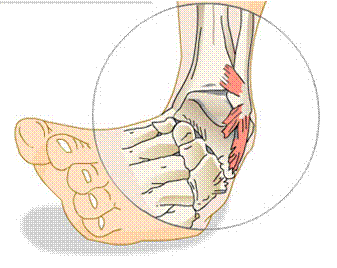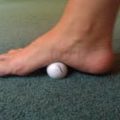*This page may contain affiliate links. When you buy through these links, we may earn a small commission at no extra cost to you.
The knee scooter can be said as one of the modern innovations in the medico-technological field.
In an era where the incidence of musculoskeletal problems and the number of road traffic accidents are increasing, this is one of the best aids which assists people to live on their own without much discomfort.
Among various walking aids which make people feel handicapped, this innovation has led people to actively get out after surgeries on the ankle without disabled feeling.
The knee scooter acts as an alternative to walkers or the traditional crutches.
It helps Orthopedician to help their ankle-injured patients for better recovery from the wound or injury.
The fact is, a knee scooter is also considered highly useful in case of an ankle injury, particularly post ankle surgery, for better recovery.

What Is A Knee Scooter?
A knee scooter is typically a modern ambulatory device that helps people after ankle surgery to move around comfortably.
This serves to be the best alternative option for traditional walkers, crutches, canes, etc.
This helps to support the affected limb in which the person cannot bear any weight.
The knee walker scooter mostly comes in two, three, or four-wheeler format.
Due to the drastic technological advancement, the original knee scooter got several transformations over the years, and thus the latest scooter version available in the market is light in weight, easily foldable, and handy.
What It Is Used for And When?
The best utility of this device is after ankle surgery or any injury to the leg below the knee.
When the person is unable to use the leg without any support or assistance, the knee scooter comes in handy.
Knee scooters are mainly designed for weight-bearing relief for persons who are encountered the injuries like fractures, ulcers in the ankle or foot, damaged Achilles tendon, sprained ankles, diabetic ulcer, or wound in the foot; surgery is done on the foot or ankle, etc.
The knee walker or scooter is also used as a good supportive device in case of complete or partial amputation of the foot, during the interval period of fitting a prosthesis, and during the waiting period for the wound in the heel, ankle, or foot.
Can You Use A Knee Scooter After Ankle Surgery?
The answer, in short, is undoubted yes.
After ankle surgery, the patient will feel difficulty in mobility, particularly while moving for his unavoidable locomotion.
Even they will feel scared and unsafe to move with a normal single limb. Sudden slipping may harm the surgery leg and also can delay the recovery.
On such occasions, the patient can use any person for his assistance. But all the time, the patient will not get any assistance, and all patients will not get support for their movements.
The knee scooter easily breaks all these hurdles and supports the person who has undergone ankle surgery.
The ankle scooter aids the person to move without any fear, without any extra assistance, and particularly without any pain and discomfort, which generally happen while using the crutches.
In the case of crutches, most of the body’s weight will rest in the arms.
But in a knee scooter, the leg muscles will be used maximally for the motion, which reduces the discomfort to the person.
Few Drawbacks You Need to Know About
Although knee scooters offer you varied advantages, there are a few limitations you need to be aware of. Some of these include:
1- Not suitable for stairs
The major drawback of using a knee walker or a scooter is it cannot be used for climbing the stairs or to come down from it.
It’s designed in such a way that you can only use them on a flat surface or in an elevator but not on stairs.
If you anyhow try to use them on stairs it might result in an accident and should, therefore, be completely avoided.
2- Puts more stress on the other foot
The design of a scooter requires you to walk using your healthy foot when you want to navigate from one place to other.
Since you are using your other foot, for moving your body forward, all the time it can put extreme pressure and a lot of strain on your leg.
While a shorter distance would not be a problem, staying on a scooter for a longer time to cover long distances can be stressful due to constant kicking on the ground.
3- Requires balancing and posing a risk of falling
Walking on a knee scooter in a well-balanced way may require lots of practice and time. One wrong kick, and you may find yourself on the ground.
Since your injured leg remains on the crutch pad in an upright position and the other leg is constantly kicking on the ground to push the body forward, you will need to balance your body very well to avoid a fall.
Problems may get even worse for you if you get any new injuries. So, be careful and judge carefully whether you are the right candidate to use a scooter or not before trying it.
How to Use A Knee Scooter After Ankle Surgery?
The person riding the knee scooter should keep the diseased leg’s knee on the compact cushion seat of the scooter with the knee flexed.
Thus the full support will come from the shin of the unusable leg on the cushion to rest.
The opposite foot creates good contact with the ground and provides propulsion.
The optimal length hand bars provide good support for the upper limbs to change direction.
The brakes are also given along with the hand bars, which assist the person in stopping the scooter whenever necessary.
Thereby the person can easily move around easily and comfortably without anyone’s assistance.
The initial knee scooter was able to use only indoors, whereas the latest model scooter can be used outdoors on the grass and on paved locations.
Important Safety Tips and Things to Keep in Mind
The most important concern in using the knee scooter is falling.
Falls will create unnecessary complications for the person who got ankle surgery done.
Hence, the following things should be considered before using a knee scooter.
- Be sure that the height of the ankle scooter is appropriately adjusted and fixed.
- The pins, bolts, clamps, and nuts should be securely arranged
- Avoid climbing up or descending from the steps, stairs, or escalators. Keep distance from the stairs.
- Don’t try to reach down or to the side as it makes results in falls.
- Maintain a good balance in the center by keeping all the wheels in proper control.
- Avoid using the brakes frequently. Try to stop the scooter mostly by your unaffected limb as it will help you to analyze the necessity and intensity of braking.
- While moving, always keep both hands on the hand bars.
- In case you need to carry some simple materials along with you while moving from one place to another, like books, phones, purses, etc., try to purchase a basket and fit in front of the scooter.
- Don’t carry another person or kids with you while you are moving in the scooter.
- Always wear non-slip footwear while using the knee scooter.
Tips for Choosing the Best Knee Scooter for A Broken Foot
Knee scooters come in different sizes and heights. Purchase the knee scooter based on your height and body weight.
It should withstand your body weight promptly. So a heavy-duty knee scooter is always the best choice to go for.
Always better to go for a four-wheeled knee scooter instead of two or three wheels because the four-wheel device will give good support for all age groups, and there is very little risk of falls with it.
Try to get the metal scooter instead of fiber-made. It’s a known fact that metal bodies are always durable and weight bearable.
Always try to buy the basket along with the knee scooter. The basket will surely help in your regular movement, whether it is indoor or outdoor.
You can keep your basic needs like mobiles, ear pods, mini wallets, etc., in it and can go shopping.
Incoming search terms:- Why does my foot hurt with scooter after surgery
- can i use knee scooter after major tendon suguur
- do you use a boot and kneescooter after surgery to repais a ankle fracture?






